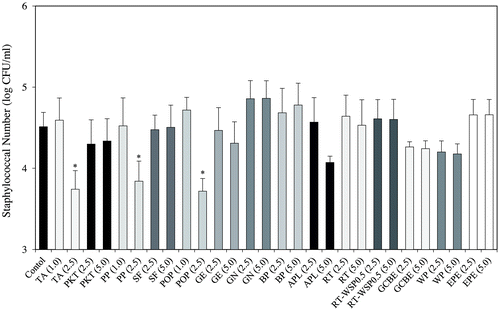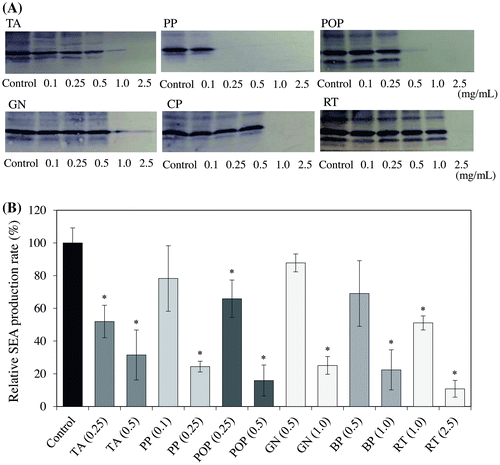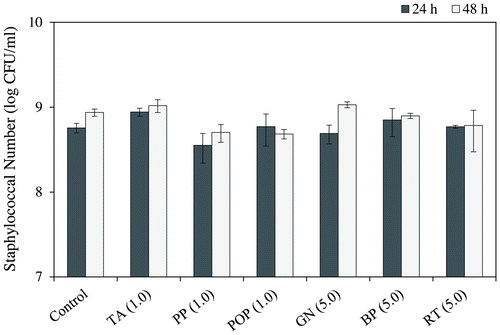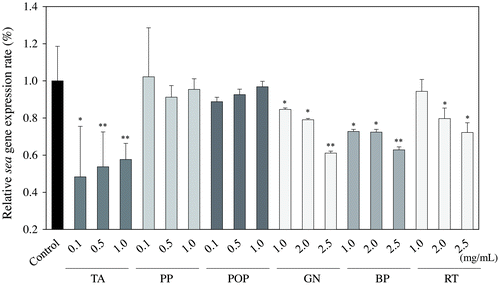Figures & data

Table 1. Food additives derived from polyphenols used in this study.
Fig. 1. Antimicrobial effects of food additives derived from polyphenols on SEA-producing strain Staphylococcus aureus C-29.

Fig. 2. Interaction between food additives derived from polyphenols and cultured staphylococcal enterotoxin A (SEA)-producing strain.

Fig. 3. Growth effect of food additives derived from polyphenols on Staphylococcus aureus.

Fig. 4. Relative gene expression of sea in Staphylococcus aureus C-29 after incubation with food additives derived from polyphenols.

Fig. 5. Inhibitory effect of food additives derived from polyphenols on biofilm formation.

